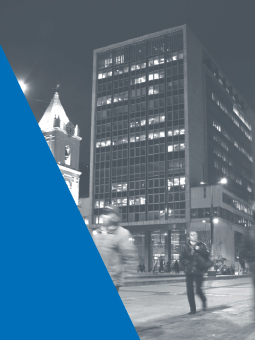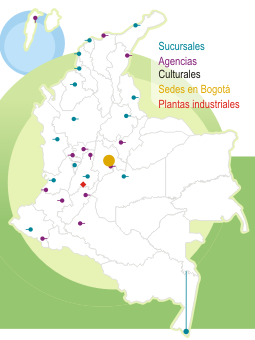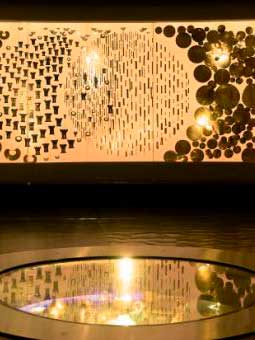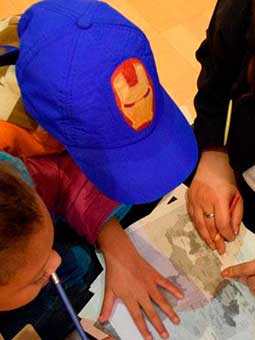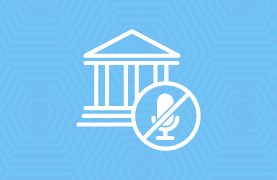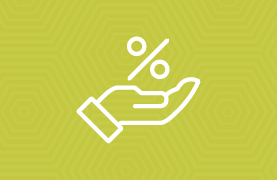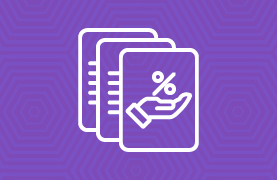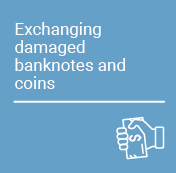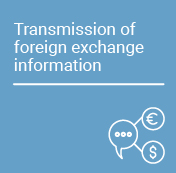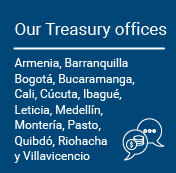This year, coinciding with the celebration of its 100th anniversary, Banco de la República (the Central Bank of Colombia) received the ‘Carbon Neutral’ certification from Bureau Veritas. This recognition indicates that the Bank has taken the necessary measures to mitigate and offset its CO2 emissions, reducing its carbon footprint in the different processes involved in its operation as a central bank, including the complex industrial processes associated with the production and distribution of banknotes and coins used by all Colombian citizens.
The certification is undoubtedly a significant achievement for Banco de la República. In 2021 and 2022, the Printing Works produced, on average, more than one billion banknotes annually, and the Mint produced around 400 million coins. Cash production consumes 60% of energy and causes 55% of the Bank's carbon footprint.
The pillars of the Bank's Environmental Management include the appropriate use of water, the implementation of a waste management strategy, energy efficiency, and the planting of trees in areas of ecological interest.
The Mint has a closed water cycle, which means that zero industrial discharges are generated. In addition, in the search for optimal water consumption, rainwater is used for irrigation and toilets at eleven of Banco de la República´s branches. Water-saving devices have also been installed, and progress has been made in the proper management of discharges.
The issue of waste management is particularly relevant in the destruction of damaged and unusable banknotes, from which the so-called shreds are produced. Approximately 600 tons of shreds are managed annually in Bogotá through composting, which helps improve soils and is used for planting trees. Additionally, there is the treatment and proper disposal of special waste, as well as efforts to reduce, reuse, and recycle industrial waste.
Actions to achieve energy efficiency include the replacement of power plants and air conditioners, as well as the modernization of high-consumption electrical substations. The Bank has also designed and built four environmentally friendly buildings in Neiva, Manizales, San Andrés, and Buenaventura that are energy and water efficient and take full advantage of the climate. Likewise, solar panels have been installed at more than ten of the Bank's branches, including the Printing Works, the Mint, branches, cultural agencies, and the Choquenzá sports center.
As mentioned above, this project is complemented with the planting of native tree species in areas of ecological interest, thus renewing the forest and facilitating the regeneration of natural ecosystems, improving their ecological balance and sustainability, and contributing to the protection of the soil and water sources. The Bank's Environmental Management Unit has implemented these initiatives and has been coordinating the corresponding activities with each of the areas involved.
The Bank has accompanied this set of initiatives1 with academic programs and cultural activities in its libraries, museums, and cultural centers. In 2020, the project El Río: territorios posibles (“The River: Possible Territories”) was launched to raise awareness among citizens about the importance of caring for rivers as a resource for Colombia’s sustainable development.
Banco de la República’s certification as “Carbon Neutral” is an encouragement to continue striving to optimize production processes by incorporating more efficient technologies in energy consumption, the rational use of non-renewable natural resources, and the strengthening of environmental culture.
1 More information on the set of activities and initiatives regarding environmental sustainability undertaken by Banco de la República can be found on the Climate Change page at Banco de la República.









